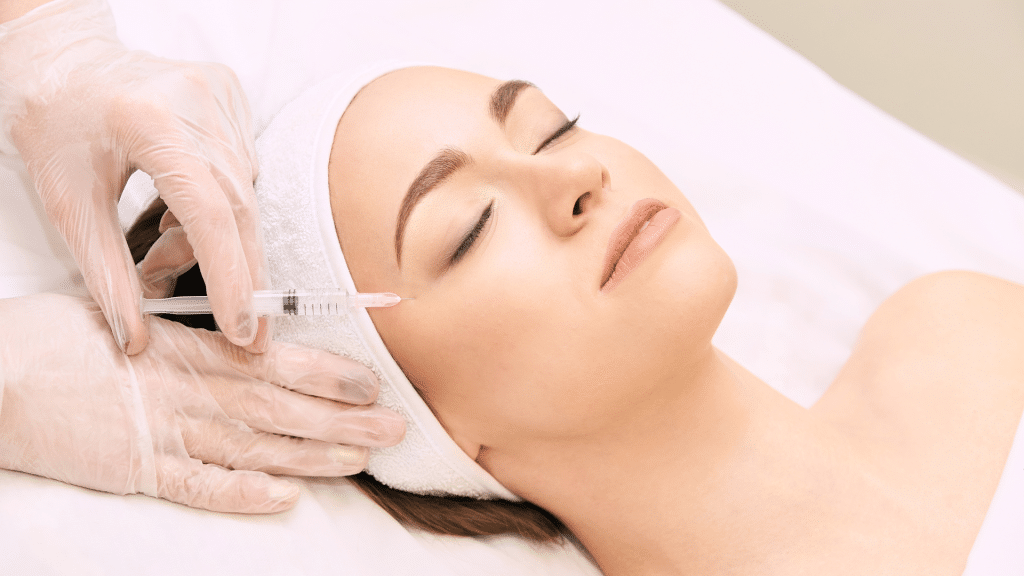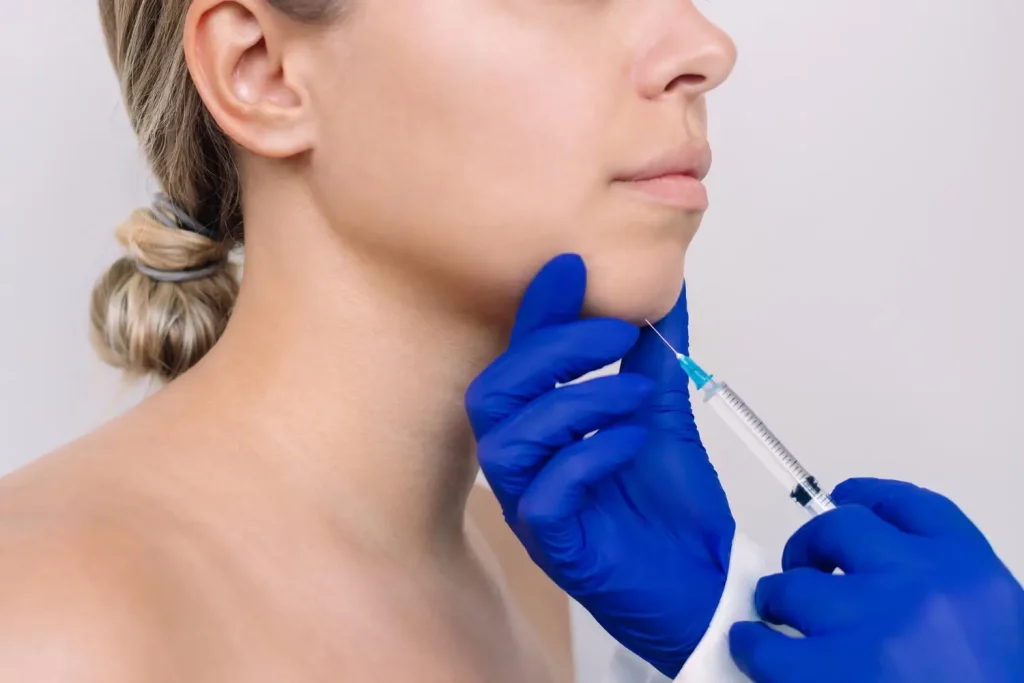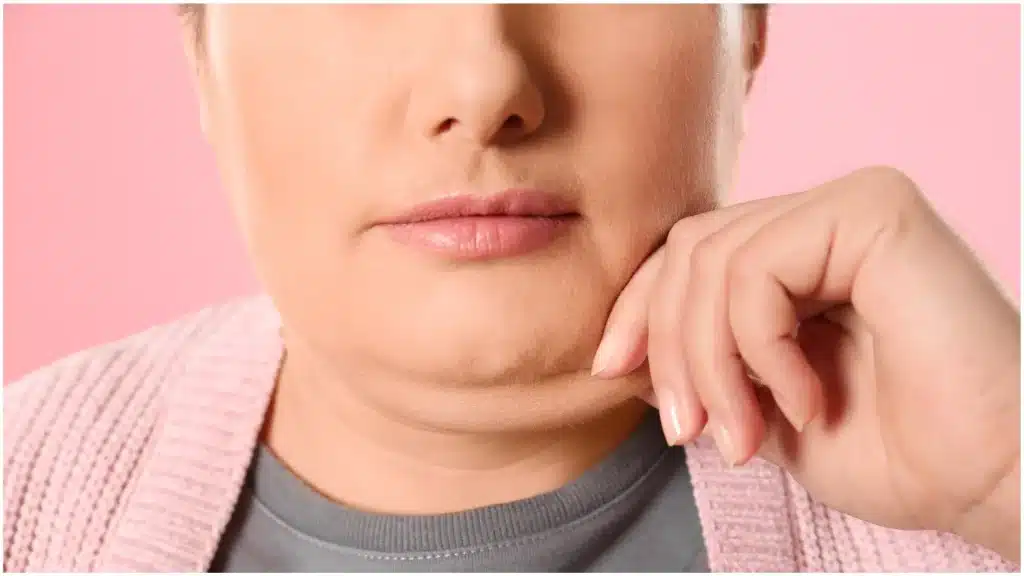
A recent study revealed that over 7 million people in the United States opted for neuromodulator injections in 2023. These injections, often referred to by brand names like Botox and Dysport, offer a popular solution for reducing wrinkles and achieving a youthful appearance.
Dysport, Botox, and Xeomin are all neuromodulators, a type of injectable medication that temporarily relaxes muscles. This relaxation smooths out wrinkles and fine lines, particularly those caused by repeated facial expressions. While they share this core function, each brand has its unique properties in terms of formulation, spreadability, and onset of action.
In this article, we will delve deeper into the world of neuromodulators, exploring the specific characteristics of Dysport, Botox, and Xeomin.
Key Takeaways
- Dysport, Botox, and Xeomin are injections that use botulinum toxin to relax muscles and smooth wrinkles.
- These treatments work differently in the body. Dysport spreads more, which might benefit large areas like the forehead. But Botox is often chosen for lines around the eyes. Xeomin is unique because it doesn’t have added proteins, possibly reducing resistance after many uses.
- Side effects from these treatments are usually mild, like swelling or bruising at the injection site. Serious problems are rare but can include allergic reactions.
About: Medical Spa RX provides medical practices with premium products at the best prices. If you want to order Dysport online for your practice, the sales representatives at Medical Spa RX can guide you.
An Introduction to Neuromodulators
Neuromodulators are injections that use botulinum toxin to relax wrinkles and stop nerves from telling muscles to tighten. Brands like Dysport, Botox, and Xeomin are popular. They make faces look younger without surgery, smoothing out wrinkles and lines. Neuromodulators can also treat jaw pain caused by TMJ disorders, providing relief by relaxing specific muscles.
Mechanism of Action
Dysport, Botox, and Xeomin make the skin smoother by blocking the nerves that contract muscles. Each product works differently. Botox is popular for treating lines between the eyebrows and around the eyes. At the same time, Dysport is for the forehead due to its ability to cover a larger area with fewer injections. Xeomin is unique as it doesn’t have any added proteins, reducing the chance of developing resistance to treatment over time.
Similarities and Differences in Their Mechanisms of Action
Botox, Dysport, and Xeomin are treatments that stop muscle movement by blocking acetylcholine to smooth out wrinkles. Botox and Dysport have added proteins, while Xeomin is a pure toxin. Dysport spreads more effectively after injection, but careful dosing is essential. Due to repeated use, Xeomin is better for those resistant to Botox or Dysport.
Indications for Use

Dysport, Botox, and Xeomin all help make skin look smooth and young. They use a toxin to stop muscles from moving too much, which helps remove wrinkles.
- Eyebrow Lift: This is all about making the area above the eyes look lifted and more awake. It can change how the face looks in a good way.
- Crows Feet: They all help soften those little lines at the corners of your eyes, making the patient look younger. We’ve covered Dysport’s effectiveness for this treatment in our article Dysport Crows Feet – Before and After.
- Forehead Wrinkles: This treatment reduces the deep lines some people have on their foreheads from frowning or raising their eyebrows frequently.
- Masseter Lines: This treatment targets the muscles along the jaw. It can make the face look softer and less square. Plus, it helps with teeth grinding at night.
Therapeutic Indications for Dysport, Botox, and Xeomin
Moving from cosmetic uses, Dysport, Botox, and Xeomin also play a crucial role in treating various medical conditions. These neuromodulators offer relief and improve the quality of life for many patients. Here’s how they reused in therapy:
- Migraine Headaches Relief: Migraine headaches get less severe with these treatments. Patients find fewer and less intense headaches after injections.
- Reduction of Muscle Spasticity in Adults: Significant reduction occurred in muscle spasticity among adults.
- Effective Treatment for Upper Limb Spasticity in Kids: Xeomin has been proven safe and effective for kids with upper limb spasticity. It helps them move their arms and hands better.
- Correction of Eye Muscle Conditions: These injectables treat eye muscle conditions, such as crossed eyes, and can help correct eye alignment.
- Management of Excessive Underarm Sweating: Excessive underarm sweating is another condition where Dysport, Botox, and Xeomin shine. These treatments reduce sweating.
- Reduction of Overactive Bladder Symptoms: These injections also decrease overactive bladder symptoms. Patients report fewer urgent trips to the bathroom.
- Relief from Chronic Neck Pain: These therapies relax tense muscles, relieving those with chronic neck pain due to cervical dystonia.
- Treatment for Facial Nerve Pain: Finally, even those suffering from specific facial nerve pain find comfort through treatment with Dysport, Botox, and Xeomin.
Dosing Considerations
Dysport, Botox, and Xeomin require proper dosage for the best results. Dysport’s initial dose is 500 units, and Botox and Xeomin have a 1:1 dosing scale. Dosage depends on muscle strength, location, and treatment area size. Starting conservatively and adjusting based on outcomes leads to optimal results. Dysport may be more cost-effective, but individual responses vary, requiring finding the optimal balance.
Time to Onset for Dysport, Botox, and Xeomin
| Neuromodulator | Time to Onset | Full Effect Visibility |
| Dysport | Results can become visible sooner, with onset typically within five days. Some reports indicate onset as early as 12 hours post-injection. | Within two weeks for full effect. |
| Botox | Typically 3-5 days | Full effects are visible after about two weeks. |
| Xeomin | It may have a slower onset than Botox, taking up to 2 weeks. | Doctors evaluate the effects at the 2-week mark. |
Duration of Action for Each Neuromodulator
| Neuromodulator | Average Duration of Action | Notes |
| Dysport | Approximately 54 days | Faster onset, often visible results within 2-3 days. |
| Botox | Approximately 56 days | Longer duration might be attributable to dosing and formulation specifics. |
| Xeomin | 3-4 months | Similar to Botox and Dysport in duration for most patients. |
Adverse Effects
Dysport, Botox, and Xeomin often cause minor side effects. Most of these go away on their own.
- People may feel pain, get swollen, or have bruises where they got the shot.
- Headaches can come up after treatment.
- A bit of redness shows up for some people at the injection site.
- Patients sometimes report feeling tired or having an allergic reaction, though this is rare.
- Muscle stiffness near where the application of the shot occasionally comes up.
- Very few people might notice their eyelids drooping if the face was the area treated.
Be aware of allergic reactions from Dysport, Botox, or Xeomin. Symptoms include breathing difficulties, rash, itching, or swelling. The treatment may spread, leading to muscle weakness or drooping eyelids.
Practical Considerations

Patient selection is critical in the world of aesthetic medicine. It ensures that Dysport, Botox, and Xeomin treatments are effective and safe for all involved.
- Assessing Skin: Focus on dynamic wrinkles caused by facial expressions like smiling or frowning for optimal treatment effectiveness.
- Considering Age: Although there’s no perfect age to start, neuromodulators are often more effective if used before deep static lines form.
- Evaluating Goals: To select the appropriate product and understand patients’ desired outcomes, whether reducing forehead wrinkles or addressing Dysport Crow’s feet before and after.
- Understanding Muscle Strength: Stronger muscles may require higher doses, and Dysport may diffuse more effectively in larger treatment areas.
- Assessing Medical History: Prioritize patient safety by screening for any conditions that pose risks during treatment.
Injection Techniques for Optimal Results

Proper injection techniques are critical to the success of treatments with Dysport, Botox, and Xeomin. These methods ensure safety and the best possible outcome for patients.
- Product Knowledge: Familiarity with Dysport, Botox, and Xeomin can help the patient choose the right one. Each has unique properties that work best for specific areas and issues.
- Facial Anatomy Understanding: A deep understanding of muscles and their functions leads to precise injections.
- Patient Assessment: Look at their muscle movement and skin quality. Decide where to inject for a natural look.
- Dosing Consideration: Follow guidelines on dosages for Dysport, Botox, and Xeomin, but also consider the patient’s needs.
Post Treatment Care and Follow-up Recommendations
Caring for patients after they receive Dysport, Botox, or Xeomin is critical. Doing so helps avoid unwanted side effects and ensures the best results.
- Massage of Injection Areas: This helps the product spread evenly and reduces the risks of complications. Tell patients to do this carefully a few times a day.
- Post-Treatment Guidelines: These rules intend to help patients heal quickly and satisfactorily. Make sure they understand what to do and what not to do.
- Assessment Booking: It is crucial to check how the patient is doing after treatment. Need for Follow-Up Treatments: Sometimes, one treatment isn’t enough to reap the full benefits. Patients should know they might need to return.
- Avoidance of Strenuous Activities: Tell your patients to take it easy. Strenuous activities can mess with the results.
Conclusion
Dysport, Botox, and Xeomin have changed how we tackle aging skin—each with a unique twist. They all work by smoothing out wrinkles but differ slightly in their makeup and effects.
Deciding on the best one depends on specific needs and desired results. With these neuromodulators, younger-looking skin is not just a dream but a real possibility.
FAQs
1. What are Dysport, Botox, and Xeomin?
Neuromodulators are like wrinkle relaxers that calm muscles in places like the forehead or around your eyes to smooth lines.
2. Can Dysport help with my headaches?
Yes! Dysport has an excellent side effect—it can ease migraine headaches. It’s pretty handy for those pesky pains.
3. How do I take care of my skin after getting Dysport?
After your treatment, it’s best to keep things simple. Avoid heavy workouts and lying down for a few hours. These are just some easy post-care steps to ensure the patient gets the best results.
References
Understanding Neuromodulation. (2019). Retrieved from https://www.hopkinsmedicine.org/news/articles/2019/01/understanding-neuromodulation
Johnson, A. J., & Chen, D. S. (2023). Office-based facial plastics procedures: Neuromodulators. World journal of otorhinolaryngology – head and neck surgery, 9(3), 220–226. https://doi.org/10.1002/wjo2.121


















